
by Kalyn Waters | May 20, 2021
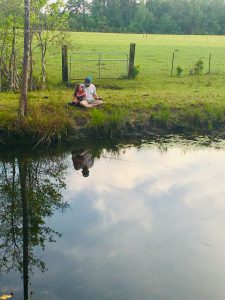
Father and daughter fishing in farm pond. Photo Credit: Kalyn Waters
Ponds are an important part of our lives. They add valuable water and ascetics to our properties, are home to multiple species of wildlife, not to mentions, for many of us provide our favorite pastime- FISHING! In the Florida Panhandle, many people are lucky enough to own their own fishpond. However, in many cases people do not have any idea of how big their pond is!
Knowing the size of a pond is critical for just about every pond management decision. To determine the volume of water in your pond the first step is to determine the acreage or surface area of your pond. Fortunately, there are some great online tools to help determine the acreage and surface area of a pond. One simple tool can be found at: fishhttps://findpondsize.com/nonmobile.php
This website allows you to locate your pond using your address and then determine the surface area in square feet and acres in just a few clicks. Image 1 shows an example of a pond that was measured using this tool.
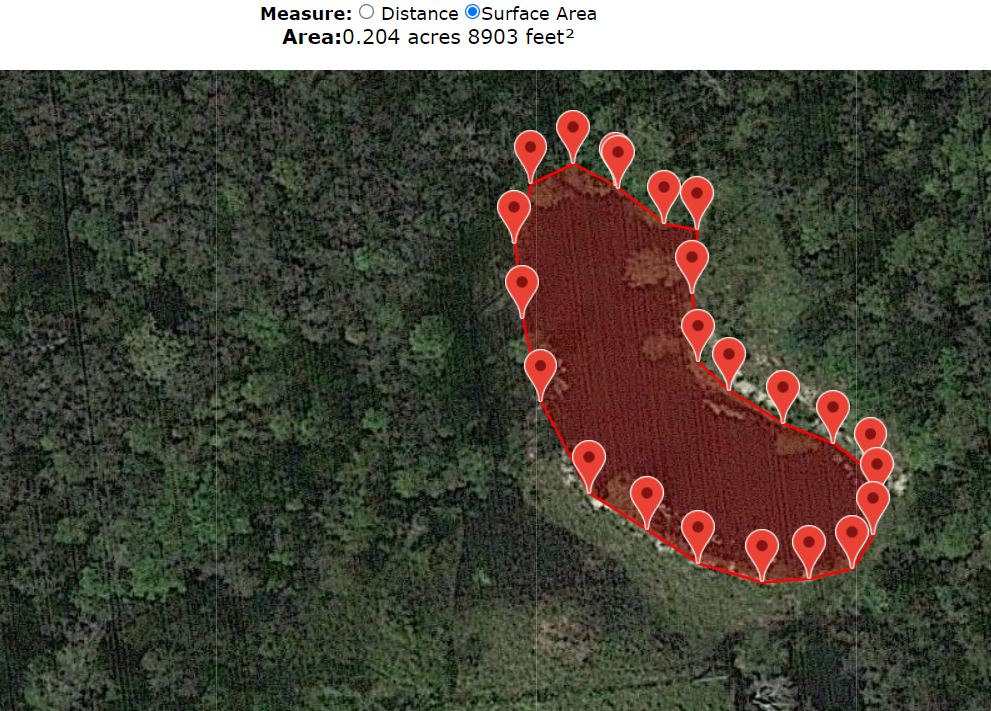
Image 1: Aerial image of a fishpond on a farm. Outline of pond is measured and depicted in red.
If you do not have an electronic device to measure the depth of your pond, don’t worry! Measuring the depth can easily be done by boat and using a weighted line. Take measurements in two transects across your pond. For ponds less than two acres, take measurements at 5 points on each transect. You will then use this information to calculate the average depth.
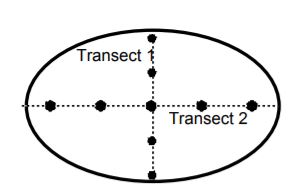
Graphic showing how to measure average pond depth using two transects across pond.
Once you have the total surface area and the average depth you can easily calculate the total gallons and volume of your pond. If math is not your strength, there are several websites online that will do it for you. Here is one of several options: https://www.lakeandpondsolutions.com/helpful-info/acerage-volume-calculations/
Knowing the correct size and surface area of your pond will allow you make informed decisions that will increase your ability to manage everything from weed control to stocking rate. From weed control, pH balance, herbicide application, determining what size aerator to purchase or how many fish to stock, the first step is to determine the volume of water your pond contains.
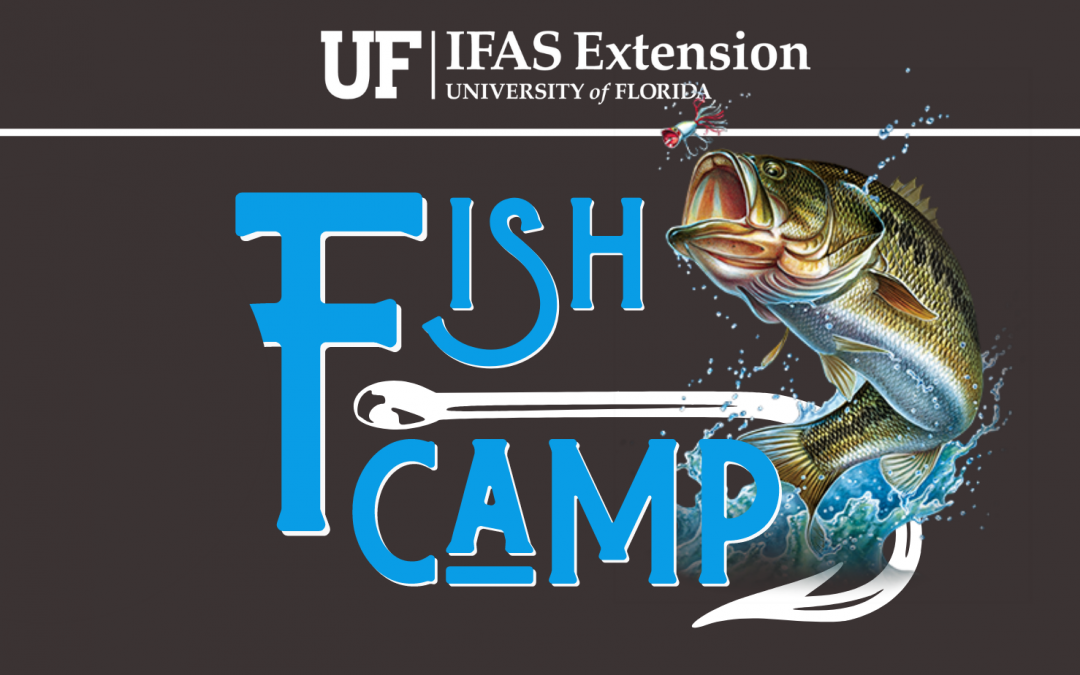
by Kalyn Waters | May 20, 2021
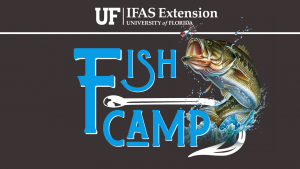 There are several considerations to be taken in fishpond management. During the first of a three-part webinar series, Dr. Laura Tiu and Daniel Leonard talk about how to manage your pond to optimize its health.
There are several considerations to be taken in fishpond management. During the first of a three-part webinar series, Dr. Laura Tiu and Daniel Leonard talk about how to manage your pond to optimize its health.
Considerations on liming your pond, fertilizing your aquatic vegetation and how to manage dissolved oxygen are topics address in this recording.
The webinar in its entirety can be viewed at: Fish Camp: Pond Health
One of the recommended methods of tracking the health of your pond is enjoyable! As a pond manager you should be gathering simple information about the fish you catch. By tracking the fish that you catch, you can look at presence, size distribution and relative abundance of adult fish populations, which is directly linked to the health of your body of water.
When logging your catch, the following should be considered:
- Date – You will want to evaluate the catches from the same time of year over several years
- Weight- not only is the length of the fish important but also collect the weight
- Type/Species of each fish caught and approximate maturity of that fish
By logging your catches over the years, you will begin to see trends and have more information to make pond management decisions. More helpful information can be found at:
How to Survey the Fish in Your Pond
How to Assess the Fish in Your Farm Pond
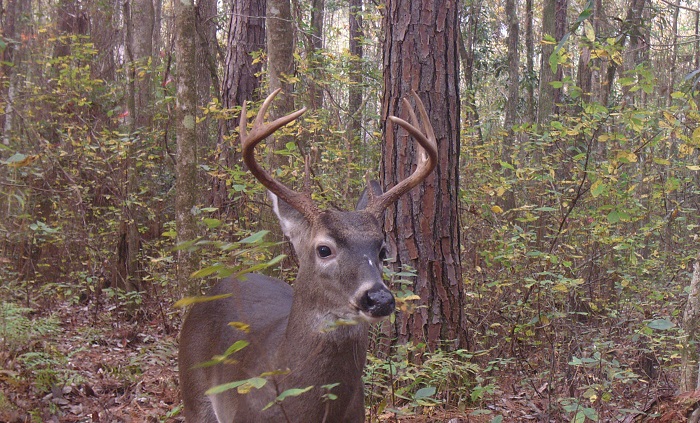
by Mark Mauldin | Apr 9, 2021
Spring can be a busy time of year for those of us who are interested in improving wildlife habitat on the property we own/manage. Spring is when we start many efforts that will pay-off in the fall. If you are a weekend warrior land manager like me there is always more to do than there are available Saturdays to get it done. The following comments are simple reminders about some habitat management activities that should be moving to the top of your to-do list this time of year.
Aquatic Weed Management – If you had problematic weeds in you pond last summer, chances are you will have them again this summer. NOW (spring) is the time to start controlling aquatic weeds. The later into the summer you wait the worse the weeds will get and the more difficult they will be to control. The risk of a fish-kill associated with aquatic weed control also increases as water temperatures and the total biomass of the weeds go up. Springtime is “Just Right” for Using Aquatic Herbicides
Cogongrass Control – Spring is actually the second-best time of year to treat cogongrass, fall (late September until first frost) is the BEST time. That said, ideally cogongrass will be treated with herbicide every six months, making spring and fall important. When treating spring regrowth make sure that there are green leaves at least one foot long before spraying. Spring is also an excellent time of year to identify cogongrass patches – the cottony, white blooms are easy to spot. Identify Cogongrass Now – Look for the Seedheads; Cogongrass – Now is the Best Time to Start Control
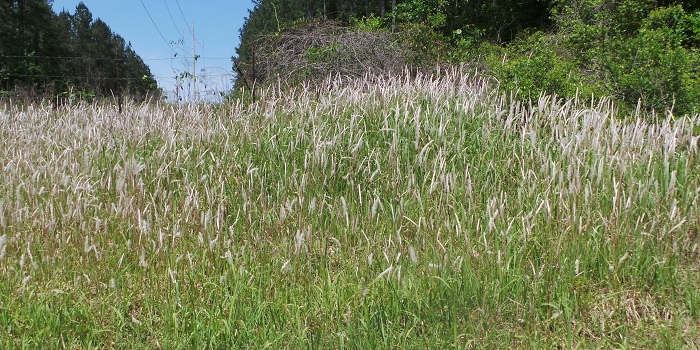
Cogongrass seedheads are easily spotted this time of year.
Photo credit: Mark Mauldin
Warm-Season Food Pots – There is a great deal of variation in when warm season food plots can be planted. Assuming warm-season plots will be panted in the same areas as cool-season plots, the simplest timing strategy is to simply wait for the cool-season plots to play out (a warm, dry May is normally the end of even the best cool-season plot) and then begin preparation for the warm-season plots. This transition period is the best time to deal with soil pH issues (get a soil test) and control weeds. Seed for many varieties of warm-season legumes (which should be the bulk of your plantings) can be somewhat hard to find, so start looking now. If you start early you can find what you want, and not just take whatever the feed store has. Warm Season Food Plots for White-tailed Deer
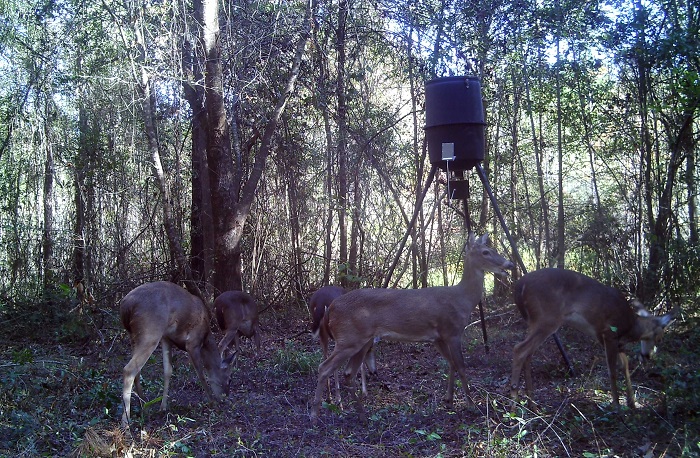
Deer Feeders – Per FWC regulations deer feeders need to be in continual operation for at least six months prior to hunting over them. Archery season in the Panhandle will start in mid-October, meaning deer feeders need to be up and running by mid-April to be legal to hunt opening morning. If you have plans to move or add feeders to your property, you’d better get to it pretty soon. FWC Feeding Game
Dove Fields – The first phase of dove season will begin in late September. When you look at the “days to maturity” for the various crops in the chart below you might feel like you’ve got plenty of time. While that may be true, don’t forget that not only do you need time for the crop to mature, but also for seeds to begin to drop and birds to find them all before the first phase begins. Because doves are particularly fond of feeding on clean ground, controlling weeds is a worthwhile endeavor. If you are planting on “new ground”, applying a non-selective herbicide several weeks before you begin tillage is an important first step to a clean field, but it adds more time to the process. As mentioned above, it’s always pertinent to start sourcing seed well in advance of your desired planting date. Timing is Crucial for Successful Dove Fields
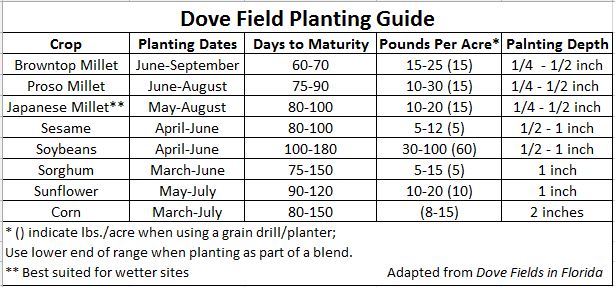
There are many other projects that may be more time sensitive than the ones listed above. These were just a few that have snuck up on me over the years. The links in each section will provide more detailed information on the topics. If you have questions about anything addressed in the article feel free to contact me or your county’s UF/IFAS Extension Natural Resource Agent.
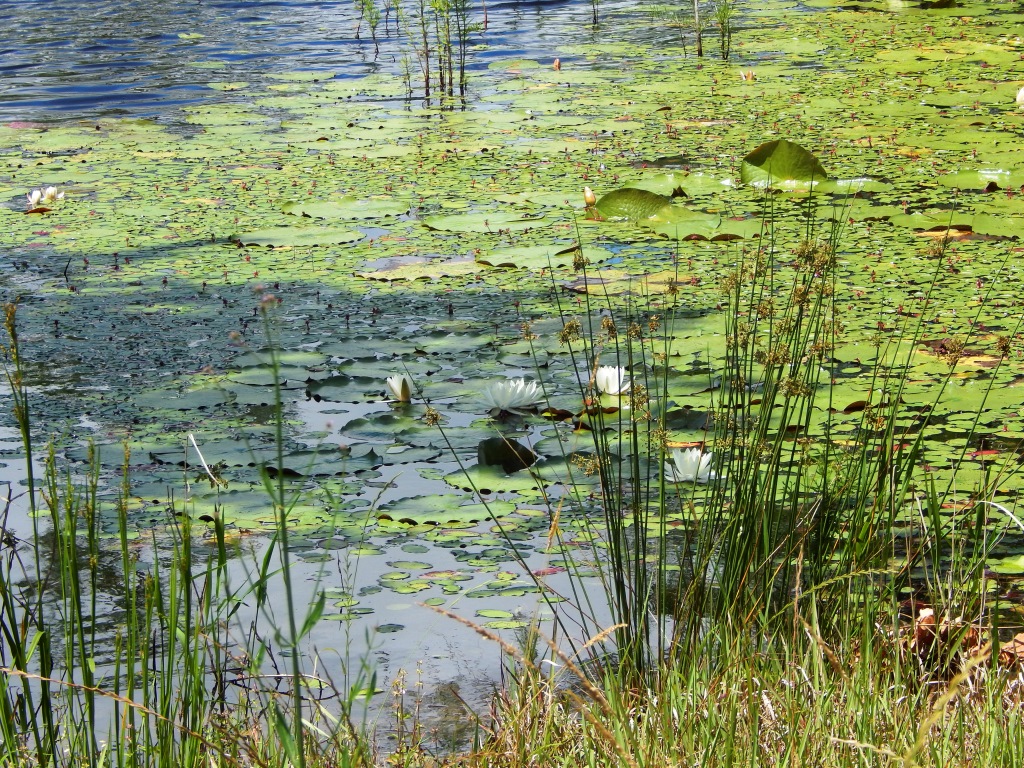
by Mark Mauldin | Apr 9, 2020
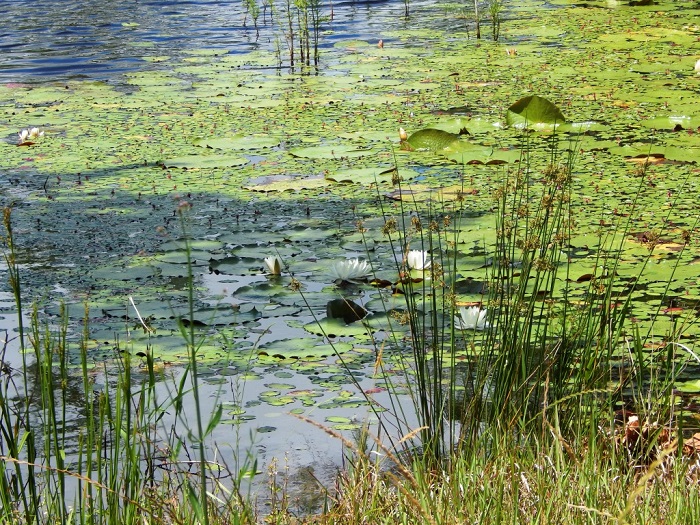
Monitor your ponds closely throughout the spring and make any necessary herbicide applications before weed growth becomes too excessive.
Photo Credit: Mark Mauldin
Even though the calendar says we are only a few weeks into spring, recent weather has been more like summer. The early arrival of sustained warm weather has water temperatures in local ponds high enough that aquatic vegetation growth has really taken off. This early growth period is the ideal time to evaluate ponds and address any aquatic weed issues that may be present, since aquatic weed infestations tend to become worse through the summer. Getting an early start generally helps control efforts to be more successful and less expensive, so get started sooner rather than later.
As plants grow, they are able to build up energy reserves, making them more difficult to control. The longer they are allowed to grow, the stronger and more difficult they are to control. Controlling weeds earlier in the growing season reduces this problem.
Similarly, as the growing season progresses plants produce more and more biomass. If a herbicide is applied and the weeds are killed, large amounts of decomposing plant material in the water can cause problems. The decomposition process uses oxygen; dissolved oxygen in the pond can drop to levels that are hazardous to fish and other aquatic species. The more plant material that is present when herbicides are applied the bigger concern this becomes. Applying herbicides earlier in the growing season, before large amounts of biomass are produced, can help lessen this problem.
Further compounding the issue, warm water is physically able to hold less dissolved oxygen than cooler water. Late in the summer, pond water can be very warm with low concentrations of dissolved oxygen even before large amounts of decomposing plant material are added.

To help reduce the risk of oxygen depletion never treat more than ½ of a pond at one time, if weed growth is already substantial treat no more than 1/3 of a pond at one time and always allow 10 -14 days for oxygen recovery between treatments. Also, avoid treating on cloudy days, another factor that can lead to lowered dissolved oxygen. Photo Credit: Mark Mauldin
Evaluating the vegetation in a pond is always the first step in the management process. Figuring out what kind of weeds you have, and if the population warrants control might seem simple, but it can be somewhat challenging. This is particularly true for submerged weeds – those that grow beneath the surface of the water. Unfortunately, submerged weeds are often the most troublesome weeds for pond owners to deal with. All submerged vegetation is not necessarily a bad thing, but there are several aggressive and/or invasive species of submerged aquatic plants that grow very rapidly and can be quite problematic, making proper evaluation critical.
While emergent and floating plants are easier to evaluate than their submerged counterparts, proper identification of all aquatic plants can help determine their potential for spread and, if warranted, the most effective control measures. If you had problem weeds in your pond last summer, you probably still do; get them identified and under control before they have time to spread. If you did not have problem weeds last summer, be on the lookout for any new/different kinds of weeds to head-off any potential issues.
Due to the current situation with COVID-19, generally speaking, County Extension Agents are not permitted to make field visits, but we are still here to help identify and provide control recommendations for your aquatic weeds. Floating and emergent weeds can generally be effectively identified using pictures. Submerged weeds can be much harder to identify using only pictures. For the best results, special care should be taken when photographing aquatic weeds. Collect a small sample of the weed, place the sample in an opaque container (preferably white in color), cover the sample with clean/clear water just deep enough for the sample to completely spread out and be supported by the water. Take multiple, well focused pictures of the sample. Some pictures should be of the entire sample, while other need to focus on the leaves and the attachment of the leaves to the stem(s). The pictures need to be emailed (not sent via text message) so the image size/quality is not compressed.
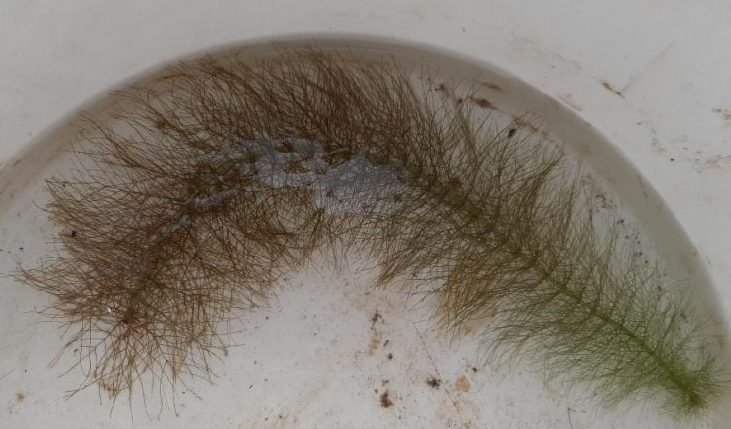
A good image of a submerged weed sample. In addition to this image close-ups of the leaves and attachment points will likely be needed for identification. Photo Credit: Nikki West
Now is the time to start managing aquatic weeds. The current situation in the world will make the process a little different, but with some effort and patience your County Extension Agent can help you get your weeds identified and develop a plan for control. On a positive side-note, most of the commonly recommended herbicides used to control aquatic weeds are available to order online, so it is quite possible you can address your aquatic weed issues all while staying “safer at home“.

by Shep Eubanks | Sep 13, 2019

Common Salvinia Covering Farm pond in Gadsden County
Photo Credit – Shep Eubanks UF/IFAS Gadsden County Extension
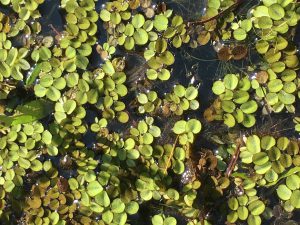
Close up of common Salvinia
Photo Credit – Shep Eubanks UF/IFAS Gadsden County Extension
Aquatic weed problems are common in the panhandle of Florida. Common Salvinia (Salvinia minima) is a persistent invasive weed problem found in many ponds in Gadsden County. There are ten species of salvinia in the tropical Americas but none are native to Florida. They are actually floating ferns that measure about 3/4 inch in length. Typically it is found in still waters that contain high organic matter. It can be found free-floating or in the mud. The leaves are round to somewhat broadly elliptic, (0.4–1 in long), with the upper surface having 4-pronged hairs and the lower surface is hairy. It commonly occurs in freshwater ponds and swamps from the peninsula to the central panhandle of Florida.
Reproduction is by spores, or fragmentation of plants, and it can proliferate rapidly allowing it to be an aggressive invasive species. When these colonies cover the surface of a pond as pictured above they need to be controlled as the risk of oxygen depletion and fish kill is a possibility. If the pond is heavily infested with weeds, it may be possible (depending on the herbicide chosen) to treat the pond in sections and let each section decompose for about two weeks before treating another section. Aeration, particularly at night, for several days after treatment may help control the oxygen depletion.
Control measures include raking or seining, but remember that fragmentation propagates the plant. Grass carp will consume salvinia but are usually not effective for total control. Chemical control measures include :carfentrazone, diquat, fluridone, flumioxazin, glyphosate, imazamox, and penoxsulam.
For more information reference these IFAS publications:
Efficacy of Herbicide Active ingredients Against Aquatic Weeds
Common salvinia
For help with controlling Common salvinia consult with your local Extension Agent for weed control recommendations, as needed.
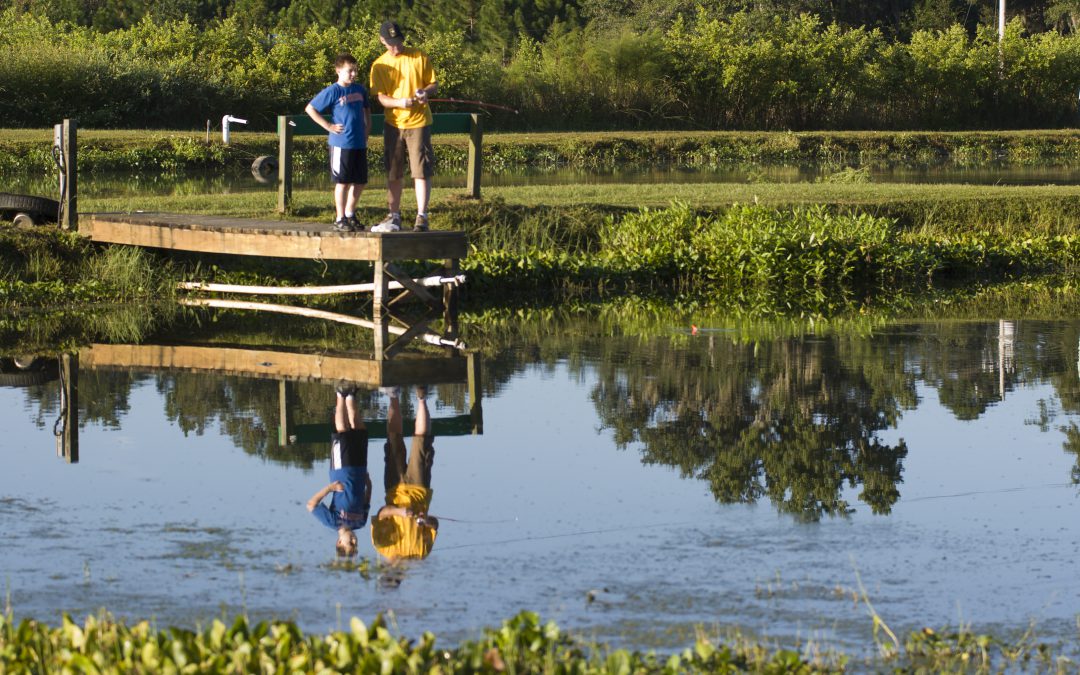
by Judy Biss | Nov 9, 2018
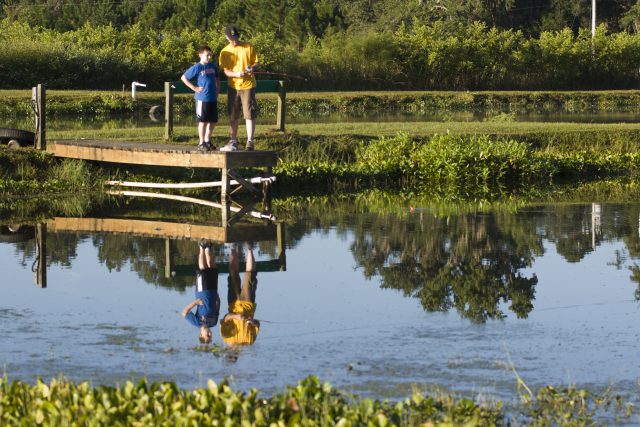
Farm ponds are used in a number of different ways, including fishing, irrigation, water control, and wildlife viewing. UF/IFAS Photo by Tyler Jones.
Farm ponds of all shapes and sizes are common in rural Northwest Florida. They are built for a number of reasons such as irrigation, water management, boating, fishing, wildlife viewing, livestock watering, and food production. Each of these uses guides the way the pond is managed to maintain its function, as well as its ecological beauty, but a factor that is important to all uses is having enough oxygen!
As you have probably observed, your pond is a dynamic system, which is influenced literally from the ground up! Much of the water’s basic chemical and physical characteristics reflect those of underlying soils (sand, clay, organic, etc.) and major sources of water (ground water, rainfall, runoff, etc.). The pond’s characteristics also influence how much oxygen is available for use by the plants and animals that live in it.
Why is Dissolved Oxygen and Aeration so Important?
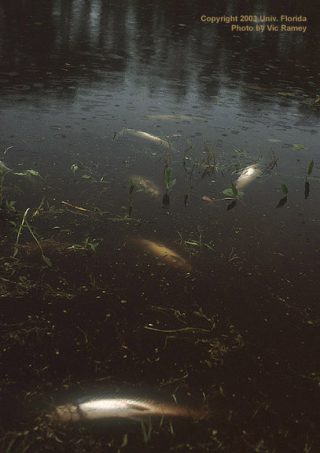
Fish kills are often the result of low dissolved oxygen levels and occur in both natural waters and man-made ponds. Photo by Vic Ramey.
The idea of oxygen being dissolved in water is a little counter-intuitive. Especially to us, as air-breathing humans! Think of your pond as a giant living, breathing organism. Its atmosphere is the water itself, and it contains dissolved oxygen gas for the fish, aquatic plants, insects, and zooplankton to “breathe.” Even bacteria need to breathe, and one of their fundamental roles in your pond is the decomposition of organic wastes like un-eaten fish food, and dead plant and animal materials.
Having enough dissolved oxygen in the water is one of the driving forces sustaining the health of your pond. Oxygen is dissolved into water directly from the atmosphere, wind and wave action, and by plant photosynthesis. Because warm water “holds” less dissolved oxygen than cold water, your pond’s dissolved oxygen levels can be lower in the summer than in the winter, especially in the early morning hours before plants begin to photosynthesize and produce oxygen. While longer days and warmer temperatures mean more sunlight for plants to photosynthesize and produce oxygen, the demand or need for oxygen by fish, bacteria, and other aquatic organisms is also increased. Periods of rainy, overcast days during the summer can greatly reduce oxygen production by plant photosynthesis. Combined that with the increased oxygen demand by other organisms, and dissolved oxygen levels can drop fast. These drops in dissolved oxygen levels often result in fish kills. Productive, nutrient-rich ponds with high levels of organic materials, and a high fish density are at a greater risk of the devastating effects of low dissolved oxygen levels.
What Can You Do to Insure Your Pond Has Enough Oxygen?
Do not be tempted to overfeed your fish. Feed them floating fish food so you can see how much they will consume in 10 to 15 minutes at each feeding. Consider feeding them every other day. In addition, as recommended in Managing Florida Ponds for Fishing “do not feed them when the water temperature is below 60° F, or, above 95° F. Fish do not actively feed at these times.” Use fish feeding behavior as your guide. Uneaten food will only add excess organic matter to the pond. The decomposition of this excess organic matter by bacteria increases the oxygen demand and likewise increases the chances of low oxygen levels and a fish kill.
Reduce nutrient inputs from runoff, livestock waste, excess fertilizer, and uneaten foods as described above, to help reduce the demand for oxygen in the system. Additionally, remove as much excess debris as possible that may have been blown into your pond as a result of October’s Hurricane Michael that affected much of Florida’s panhandle. Excess nutrients from these sources are freely available for use by hungry algae and other plants, which can then proliferate and, in turn, cause demand for more oxygen. This increased demand for oxygen can cause fish kills due to low oxygen levels as described above.
If you have an aerator, keep it operative especially during extended periods of cloudy and rainy weather. Watch your fish for signs of oxygen stress (not eating, remaining near and gulping at the surface) and aerate accordingly. Oxygen levels naturally fluctuate, and the lowest levels occur in the late evening through early morning hours when plants are not photosynthesizing and replenishing oxygen. Therefore, most important time to routinely operate the aerator is the late overnight hours into early morning.
If you don’t have an aerator, consider purchasing one, especially as your pond ages and grows more fish, plants, and algae. It is certainly less costly in the end to be proactive when it comes to maintaining adequate dissolved oxygen in your pond.
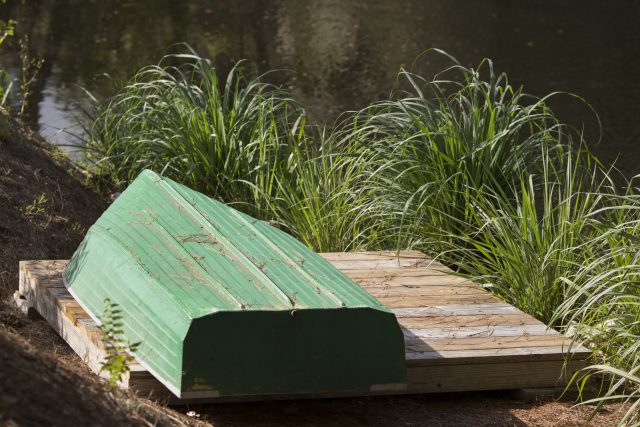
Recreation and fishing are important uses of many rural farm ponds. Photo by UF/IFAS Tyler Jones.
What kind of Aerator should I get?
There are a few basic aerator types. There are surface water agitators or fountains, and there are bottom air diffusers. They can be powered by electricity, wind, or solar power.
Diffuser aerators can help achieve a uniform oxygen distribution in your pond from top to bottom. This is especially important in deeper ponds (greater than 6-10 feet average depth) where temperature and oxygen stratification can occur. Diffuser aerators pump surface air through the base sitting on the bottom of the pond causing bubbles of air to rise to the surface. Diffusers also increase circulation and keep the deeper parts of your pond from becoming oxygen depleted. In a new pond, or one with flocculent sediments, a diffuser may cause turbidity due to the physical action of the diffuser base sitting on the pond bottom circulating oxygen from the bottom to the surface.
Other aerator options are the fountain sprays or surface agitators that aerate surface water. At a bare minimum, this can be a hose shooting water out over the water surface. Surface fountains and agitators work well in small shallow ponds, but are generally not recommended for larger more productive ponds that need more oxygen. In some commercial or farm ponds, paddle wheel agitators powered by a tractor’s pto are used during periods of low oxygen as an emergency measure when a fish kill is just beginning to occur.
Where Can I Purchase One?
The type or types of aerators you need for your pond will depend on the pond’s size, depth, level of productivity (nutrient level, number of fish), use, and water quality. There are a number of shopping options online for pond aerators. Try searching using the term “pond aerators Florida.” Also, some local Panhandle fingerling fish farms sell these products too. Here is a list of fish farms from the Florida Fish and Wildlife Conservation Commission: FWC Freshwater Fish Stocking List. Additionally, there are dissolved oxygen meters you can purchase which accurately read the amount of oxygen in your ponds. This is yet another tool to use in the overall management of your pond.
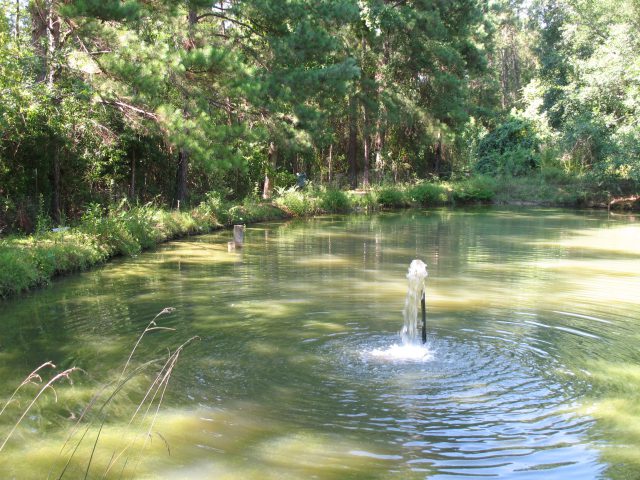
Simple surface agitators can be used to aerate small shallow ponds, but are generally not recommended for larger more productive ponds that need more oxygen. Photo by Judy Biss
More information about pond management can be found in the following references used for this article:
Overview of Florida Waters – Dissolved Oxygen
Clemson Cooperative Extension: Aeration, Circulation, and Fountains
Southern Regional Aquaculture Center: Pond Aeration
Managing Florida Ponds for Fishing
The Role of Aeration in Pond Management





















